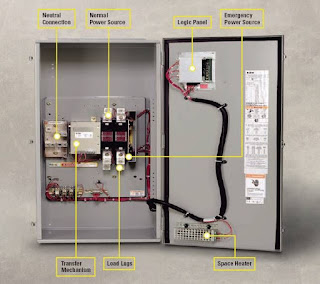POWER FACTOR CORRECTION FOR ELECTRICAL SYSTEM
POWER FACTOR CORRECTION- complete guide.
What is power factor?
Power factor is a measurement of power quality and can be calculated in relation to an entire power system or individual equipment such as low voltage switchgear.
The formula for power factor is PF = kW / KVA.
The above formula calculates the ratio of working or actual power (kW) to the apparent power; which is what we are charged for (kVA). So, in basic terms power factor is a calculation of how much value for money we’re getting for the power we truly consume.
The excess power supplied but which doesn’t produce any productive work is known as the reactive power (kVAR). The reactive power (kVAR) and actual power (kW) combined will amount to the total apparent power.
A perfect power factor is 1.0, which would signify complete value for money, where zero reactive power is present, and all power is being used productively. However, a perfect power factor is typically unfeasible to achieve, and it is more realistic to aim for a power factor as close to 1.0 as possible.
A power factor below 0.95 is considered poor, with anything below 0.85 deemed extremely poor and requiring rectification.
What Causes Poor Power Factor?
As previously discussed, the excess power supplied but not productively used is called reactive power (KVAR). The greater the KVAR within an electrical system, the lower the power factor will be. To find out what causes low power factor we must ask what causes large kVAR within a system; And the answer is…inductive loads.
Inductive loads require a magnetic field to operate and reactive power (kVAR) is required to sustain that magnetic field. Examples of inductive loads include transformers, induction motors and induction generators.
How to Correct Power Factor
Reactive power (kVAR) is an unavoidable by product of inductive systems, however it can be counteracted. As inductive loads are a source of reactive power, an equal and opposite load must be applied to offset the impact on the power factor. This is known as a capacitive load and provides a reactive current that reduces the magnitude of the reactive power. By adding capacitors to the circuit, the amount of current required from the utility supplier is reduced as this rebalances the apparent power (KVA) with the actual power (kV); subsequently bringing the power factor closer to 1.

Why is Power Factor Correction Important?
A low power factor signifies that the power you are paying for is not being utilised in a productive way. Therefore, a less than satisfactory power factor can can have many implications on business operations, especially in industrial or manufacturing facilities with a multitude of motors and machinery operating at once.
The main implications include;
1. Voltage drops
Low power factor causes higher current flow through the circuit which increases the voltage drop in the conductor, in turn reducing power efficiency. Significant voltage drop can result in improper or erratic operation which ultimately causes damage to the equipment.
Additionally, the unpredictable nature of systems that are subject to low voltage drops can be extremely dangerous for operating personnel, as the potential fire risk will be higher.
2. Higher utility bills
As the apparent power is a combination of the actual power and reactive power, any increase in reactive power will increase the apparent power that the utility supplier must supply to your system; This is the power you are paying for. As a proportion of this purchased power is reactive power which serves no productive function, value for money will be poor. The higher the reactive power (kVAR) the less cost efficient your system operations will be.
3. Penalties from energy provider
It is common for energy providers to impose monetary penalties on customers that have a low power factor. These added penalties further increase the cost inefficiencies associated with having a low power factor in the first place.
Some suppliers even reward customers that succeed in achieving a high power factor of 0.95 and above with utility discounts. Therefore, by adding power factor correction to your low voltage system you can eliminate penalty changes and reduce your utility bills.
4. Reduced equipment life
As previously stated, voltage drops and power overloads that occur as a result of low power factor can put undue stress on your power infrastructure, subsequently reducing its useful life. This can result in system maintenance or replacements being required on a more frequent basis, which can incur significant costs due to the large capital investment required infrastructure replacements.
Main components used in power factor correction:
- Capacitors
- Reactors
- HRC Fuse
- Contactor with over load relay
- Control and power fuse
- Modbus modem( Ethernet for communication)
- MCCB
Reactoris used in conjuction with capacitor banks in series. Its main function is to compensative or produce reactive power. According to the purpose of use, reactor helps to limit inrush or short-circuit current, filter out harmonics.
HRC FUSE(High repturing capacity fuse):









Comments
Post a Comment